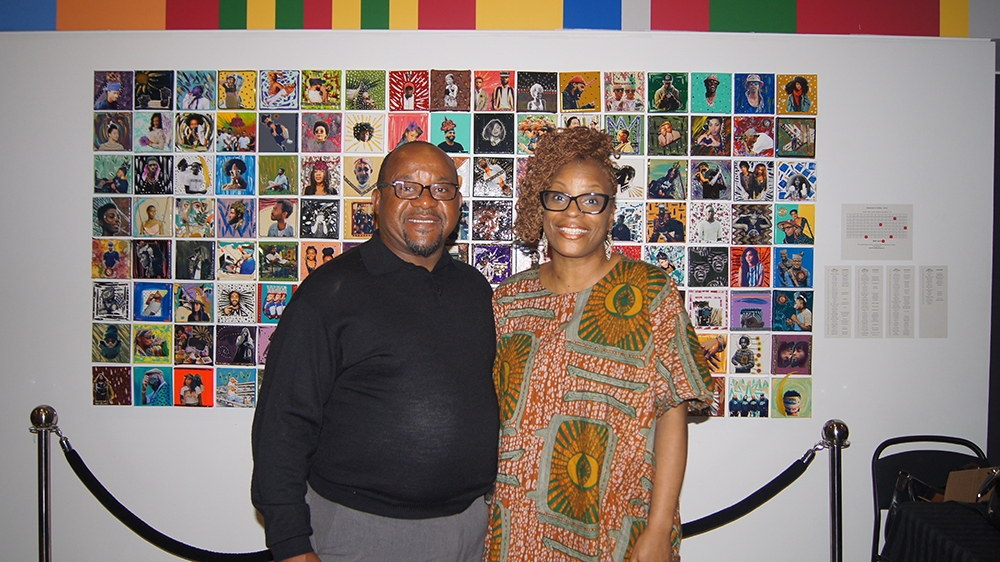Bernice Afriyie | Arts Editor
Featured image: Amani stands with her pastor outside of Native Earth Performing Arts’ Aki Studio after the premiere of her play She Said/ He Said. | Courtesy of Amani
Anne-Marie Woods, or Amani, dazzles audiences with her humour, wit and realness at the premiere of her play She Said/He Said. On September 15, the graduate of the Dalhousie University professional actor training program was accompanied by her onstage male companion HE, played by Toronto-born actor and award winner Matthew G. Brown.
The play opened to a bare black stage dressed with a chair and table on both ends and a voiceover of Amani reciting her spoken word poem “Blacktose Intolerant.” The words rang through the audience: “Lately, I’ve been meeting sisters who are telling me that they are blacktose intolerant. Tired of the black man. Ask me to try and understand ‘cause they’ve had trials and tribulations and it’s caused them some frustration, so now they are blacktose intolerant. I don’t get it, see. I love my brothers. No matter what, [the] negative situations or relationships I have been in have nothing to do with the entire race of black men.” The poem was more than a clever pun, it is the opening lines of the poem that foreshadow the many themes of the play.
The characters SHE and HE brilliantly capture the diverse experiences of black people. The general pronouns of the characters do not generalize black experiences, but instead refuse to use words to mark and dictate what being black means, forcing the audience to get to know the characters without linguistic markers. Instead, She Said/He Said employs song, spoken word and poetry to convey SHE’s personal struggles with finding love and acceptance from black men, especially in Toronto, as well as HE’s struggles with connecting with black women.
In a similar way, the production rejects the negative and stereotypical images and words typically associated with black people. The stage is stripped down to its bare necessities, against a black background occupied by two black bodies, and as such, SHE and HE shed society’s definition of an angry black women and a criminal black man. At one point in the production, both characters say that they cannot represent all women or men, but by telling their stories of heartbreak and internal discrimination, they create a dialogue for other black women and men to tell their stories as well.
She Said/ He Said comments on external racism but also deals with racial relations between black women and men. The production easily could have glossed over gender issues between black women and men but chooses not to. SHE speaks of her past heartbreak in relationships with black men and their unwillingness to return her optimistic hellos in Toronto streets. HE shares how black women would often give him a cold shoulder or ignore him completely. These honest admissions help to construct an accurate image of black people. Regardless of what the media says about black people or what black women and men think of each other, there is a black man and women who have found love in each other and attempt to make their relationship work despite their baggage. The strength of the production rests in its ability to be outwardly critical and internally reflective and honest at the same time.


